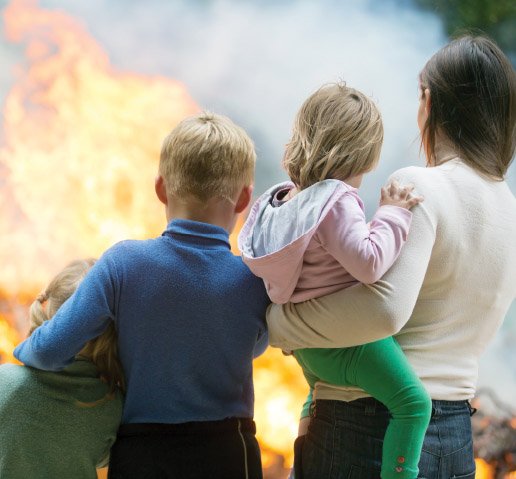
Due to an increase in fires across our regions, the Orangeville, Caledon, Brampton and Mississauga Fire and Emergency Services Public Fire and Life Safety Officers are asking for your help. In normal times, they routinely meet with students face-to-face to teach them about fire safety. In current times and for optimal impact, parents, guardians and caregivers are urged to regularly review the principles of fire safety with all children in your care and implement the basics of Fire Prevention, Detection and Home Escape Planning within your home.
PREVENTION | Please discuss the following educational safety messages with children and all members of your household:
- Practice safety in the kitchen. Unattended cooking is the number one cause of fires throughout the region. If a fire occurs on a stove top pan or pot, safely slide a lid or baking tray over the fire to smother it.
- When charging electronic devices, charge them on non-combustible surfaces, rather than surfaces such as beds or under bed sheets.
- Candles should ideally be battery operated but if using traditional candles, they must only be lit by an adult. The candle should be in a container that doesn’t tip easily; once lit, they must be kept away from anything that can burn and remember to blow them out before anyone leaves the room.
- Space heaters and other heating equipment should be plugged directly into wall outlets. Keep anything that can burn at least three feet (one metre) away from heating equipment. Turn off when you go to bed or leave the room.
DETECTION | Only working smoke and carbon monoxide (CO) alarms save lives. Demonstrate and discuss the importance of knowing the sound of smoke and CO alarms to all members of your household.
- A working smoke alarm must be located on every storey of the home and a CO alarm should be installed on all sleeping levels of the home. Ideally, every bedroom should be equipped with a smoke alarm and all smoke alarms should be interconnected.
- Test these life-saving devices monthly and replace by the date that’s shown on the side or back of the alarm (usually, 8-10 years from the date of manufacture for smoke alarms and 5-7-10 years for CO alarms). If you have a fire emergency in your home, a working alarm will give you the time your family and pets need to get out safely.
ESCAPE | Make a home escape plan to support your family’s safe evacuation from the home in the event of an emergency.
- Discuss and prepare a home escape plan with all members of your household.
- Practice it twice a year and we encourage you to practice this by sounding a smoke or carbon monoxide alarm with your pets nearby, gathering all members of your household who may need assistance to evacuate.
- Chose a predetermined meeting place outside in front of your home and educate all family members to never go back inside for anything.
- In case of a fire emergency in an apartment/condo building, it is important to remember to sound the building’s fire alarm system if it is equipped to alert other occupants and call 911.
- If unable to evacuate your home, gather your family in a room with a large window, close and seal the door behind you, call 911 and provide your address and location. All scenarios should be discussed and practiced ahead of time.
For additional information and contact details, please visit your local fire service’s website by clicking on the logos below. Fire service representatives are happy to answer any questions you or your dependents may have.
Thank you for being fire safe and reviewing these important fire safety messages with the children in your care. Please take the time now to sit with all members of your family and make fire safety a priority within your home.
